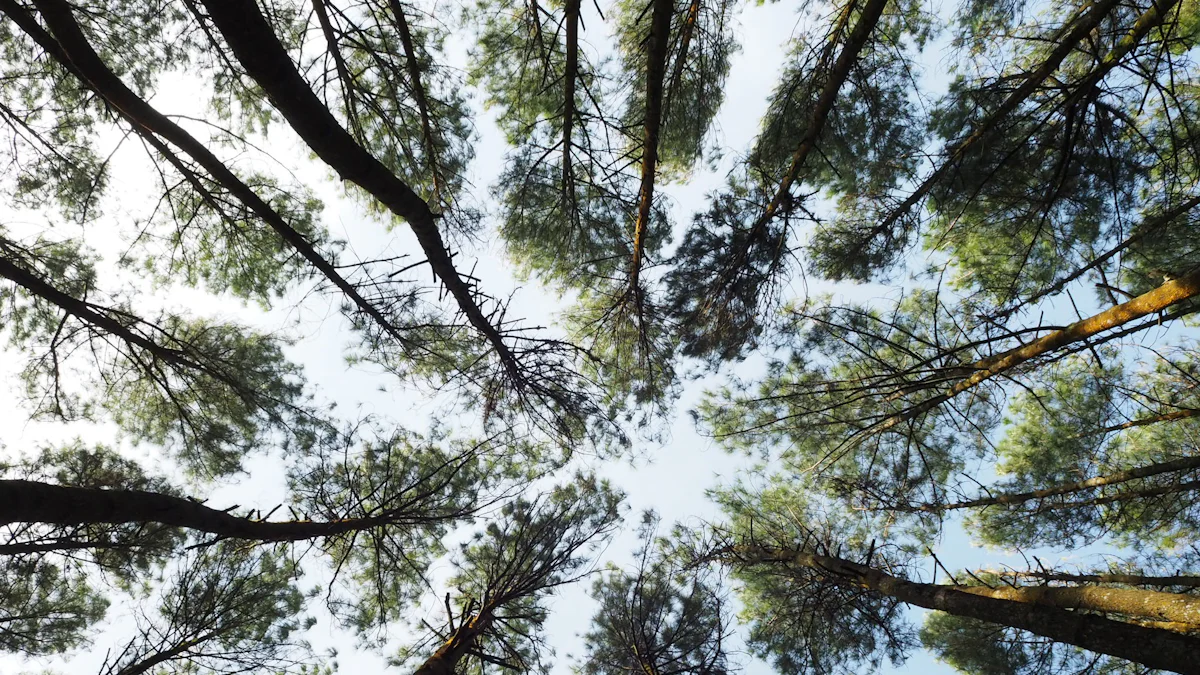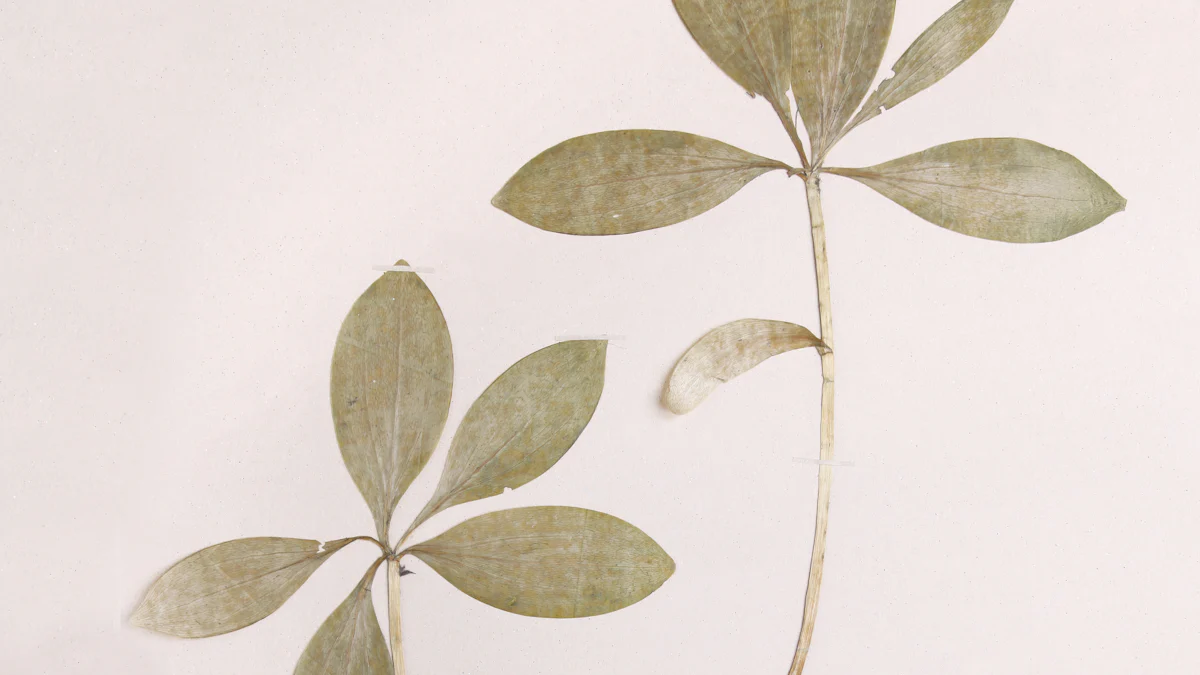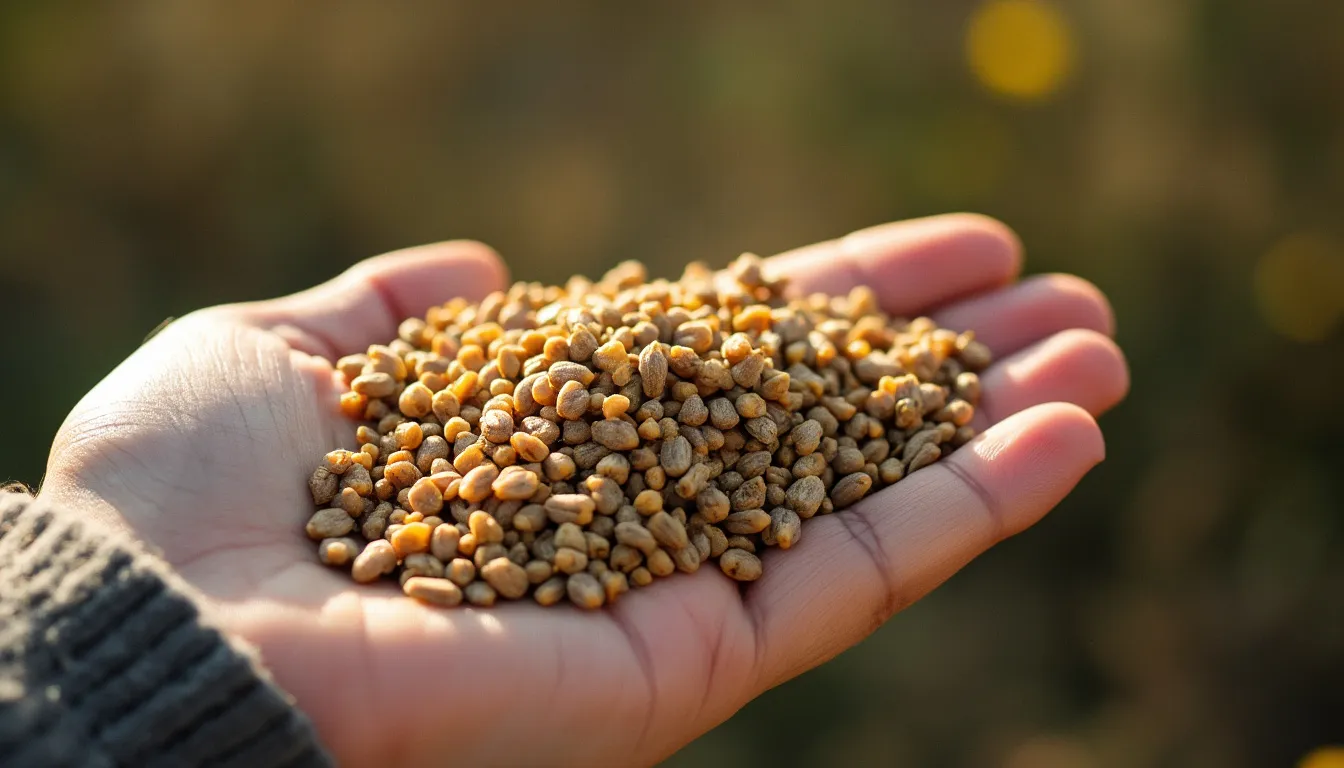Trees, Leaves, Flowers, and Seeds in the Plant Kingdom

The plant kingdom, or Kingdom Plantae, captivates with its vast diversity. Trees, leaves, flowers, and seeds are essential components that sustain life on Earth. With over 500,000 plant species worldwide, many face threats from invasive species and habitat loss. The Cape Floral Kingdom, despite its small size, boasts the highest plant biodiversity. Understanding the importance of trees, leaves, flowers, and seeds helps us appreciate the intricate balance of ecosystems. Explore how these elements contribute to this remarkable world.
Trees: The Giants of the Plant Kingdom

Structure and Growth
Trunk and Branches
Trees stand tall with a strong trunk. The trunk supports branches that spread out to capture sunlight. Each branch holds leaves that perform photosynthesis. The trunk's growth rings tell the tree's age. These rings form as the tree grows each year. The trunk also transports water and nutrients from the roots to the leaves.
Roots and Stability
Roots anchor trees firmly in the soil. They absorb water and nutrients essential for growth. Roots spread wide and deep, providing stability against strong winds. Some roots store food for the tree. This storage helps the tree survive during harsh conditions.
Ecological Importance
Habitat for Wildlife
Trees provide homes for many animals. Birds build nests in branches. Squirrels find shelter in tree hollows. Insects live under the bark. Trees offer food through their leaves, fruits, and seeds. This support creates a thriving ecosystem.
Carbon Sequestration
Trees play a crucial role in carbon sequestration. They absorb carbon dioxide from the atmosphere. This process reduces greenhouse gases. Trees store carbon in their trunks, branches, and roots. This storage helps combat climate change.
Fun Facts About Trees
Oldest and Tallest Trees
Some trees have lived for thousands of years. The Great Basin Bristlecone Pine is among the oldest. The tallest trees are the coast redwoods. These giants reach over 350 feet. Their height amazes visitors from around the world.
Unique Tree Species
Many trees have unique features. The Baobab tree stores water in its trunk. The Rainbow Eucalyptus displays colorful bark. The Dragon Blood tree has red sap. Each species adds to the diversity of the plant kingdom.
Leaves: The Powerhouses of Photosynthesis

Structure and Function
Photosynthesis Process
Leaves capture sunlight to fuel photosynthesis. Chlorophyll in leaves absorbs light energy. This energy converts carbon dioxide and water into glucose and oxygen. Photosynthesis supports plant growth and oxygen production. Leaves play a vital role in maintaining ecological balance.
Leaf Anatomy
Leaf anatomy includes several key parts. The epidermis protects the leaf surface. Stomata allow gas exchange. Mesophyll cells contain chloroplasts for photosynthesis. Veins transport water and nutrients. Each part contributes to the leaf's efficiency.
Types of Leaves
Simple vs. Compound Leaves
Simple leaves have a single blade. Compound leaves consist of multiple leaflets. Each type offers unique advantages. Simple leaves maximize sunlight capture. Compound leaves reduce wind resistance. Both types adapt to different environments.
Deciduous vs. Evergreen
Deciduous leaves fall seasonally. Evergreen leaves remain year-round. Deciduous trees conserve energy in winter. Evergreen trees maintain photosynthesis throughout the year. Each strategy supports survival in diverse climates.
Interesting Leaf Adaptations
Carnivorous Plants
Carnivorous plants exhibit unique adaptations. Leaves trap insects for nutrients. Pitcher plants and Venus flytraps are examples. These plants thrive in nutrient-poor soils. Insect digestion supplements their diet.
Water Conservation Strategies
Leaves employ strategies to conserve water. Succulent leaves store water in arid regions. Waxy coatings reduce water loss. Some leaves curl to minimize exposure. These adaptations ensure survival in harsh conditions.
Flowers: Nature's Reproductive Marvels

Anatomy of a Flower
Petals and Pollination
Petals display vibrant colors. These colors attract pollinators. Bees, butterflies, and birds visit flowers for nectar. The shape and size of petals guide pollinators to the flower's center. This guidance ensures effective pollen transfer. Pollination is essential for plant reproduction.
Stamens and Pistils
Stamens produce pollen. Each stamen consists of an anther and a filament. Pollen grains contain male gametes. Pistils receive pollen. The pistil includes the stigma, style, and ovary. Fertilization occurs when pollen reaches the ovary. This process leads to seed formation.
Pollination Mechanisms
Insect Pollination
Insects play a vital role in pollination. Bees collect pollen on their bodies. Butterflies and moths transfer pollen with their wings. Insects visit flowers for nectar. This mutual relationship benefits both plants and pollinators. About 80% of flowering plants rely on pollinators for reproduction.
Wind and Water Pollination
Wind carries pollen from one flower to another. Grass and trees often use wind pollination. Water can also transport pollen. Aquatic plants utilize water currents for pollination. These methods do not require animal assistance. Wind and water ensure genetic diversity in plant populations.
Fascinating Flower Facts
Largest and Smallest Flowers
The Rafflesia arnoldii holds the title for the largest flower. This giant blooms in Southeast Asian rainforests. The flower can reach up to three feet in diameter. The smallest flowers belong to the Wolffia genus. These tiny blooms float on water surfaces. Both extremes showcase nature's diversity.
Unusual Flowering Plants
Some flowers exhibit unique traits. The corpse flower emits a strong odor. This scent attracts carrion beetles for pollination. The ghost orchid lacks chlorophyll. This orchid relies on fungi for nutrients. Unusual flowering plants adapt to specific environments. These adaptations highlight the complexity of the plant kingdom.
Seeds: The Future of Plant Life

Seed Formation and Structure
Seeds represent the beginning of new plant life. The formation process involves several stages. After fertilization, the ovary walls thicken and ripen into fruit. This fruit protects the developing seeds inside.
Seed Coat and Protection
The seed coat serves as a protective layer. This outer covering shields the embryo from damage. Environmental factors like temperature and moisture can affect seeds. The seed coat ensures safety during these changes.
Embryo and Nutrient Storage
Inside the seed, the embryo waits to grow. Nutrients stored within support this growth. These nutrients provide energy for the initial stages. The embryo relies on this storage until it can photosynthesize.
Seed Dispersal Methods
Seed dispersal is vital for plant reproduction. Different methods ensure seeds reach suitable environments. Dispersal increases genetic diversity and survival chances.
Wind and Water Dispersal
Wind disperses seeds over large areas. Lightweight seeds travel far with the breeze. Dandelions and maples use this method. Water also aids in dispersal. Seeds float to new locations in rivers and streams.
Animal-Assisted Dispersal
Animals play a key role in seed dispersal. Many plants have evolved alongside animals. Fruits attract animals with their color and taste. Animals eat the fruit and later deposit seeds elsewhere. This relationship benefits both plants and animals.
Surprising Seed Stories
Seeds hold fascinating stories and mysteries. Some seeds defy expectations with their longevity and adaptability.
Longest-Living Seeds
Some seeds remain viable for centuries. The Judean date palm seed sprouted after 2,000 years. This remarkable survival showcases nature's resilience.
Seeds in Space
Scientists study seeds in space to understand growth in microgravity. Experiments on the International Space Station reveal insights. These studies help prepare for future space farming.
The Interconnectedness of Plant Components
How Trees, Leaves, Flowers, and Seeds Work Together
Nutrient Cycles
Plants create a complex network through nutrient cycles. Trees absorb nutrients from the soil. Leaves perform photosynthesis to produce energy. Flowers attract pollinators, ensuring reproduction. Seeds spread to new locations, continuing the cycle. Each component plays a vital role in sustaining life.
Ecosystem Balance
Each plant part contributes to ecosystem balance. Trees provide shade and shelter. Leaves regulate temperature and moisture. Flowers support pollinators. Seeds ensure plant diversity. This interconnectedness maintains a stable environment.
Human Impact and Conservation
Deforestation and Reforestation
Human activities affect plant ecosystems. Deforestation removes trees, disrupting habitats. Reforestation efforts aim to restore these areas. Planting trees helps rebuild ecosystems. This action supports wildlife and reduces carbon levels.
Protecting Plant Diversity
Conservation efforts protect plant diversity. Preserving unique species ensures ecological balance. Botanical gardens and seed banks safeguard rare plants. Education raises awareness about plant conservation. Everyone can contribute to protecting this vital resource.
Understanding the importance of trees, leaves, flowers, and seeds enriches your appreciation for the plant kingdom. Each component plays a vital role in maintaining ecological balance. Exploring plant life reveals fascinating adaptations and interactions. Conservation efforts ensure the survival of diverse plant species. Protecting plants supports ecosystems that provide essential services to humans. You can contribute by learning about and advocating for plant conservation. Embrace the beauty and complexity of plants. Your actions can make a difference in preserving this invaluable natural resource.
See Also
Plant and Fungi Knowledge Encyclopedia
Museum Welcome: Botanicum Edition

